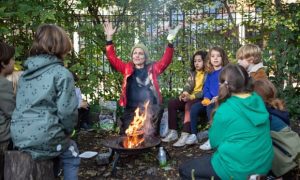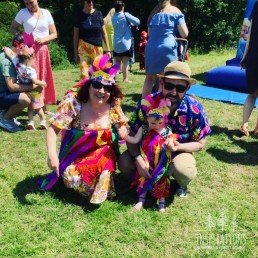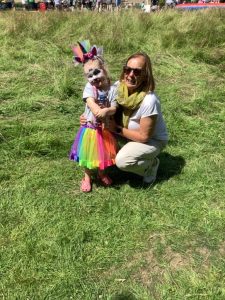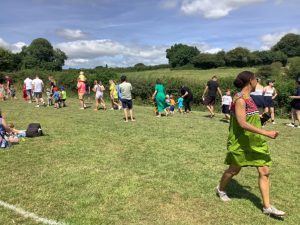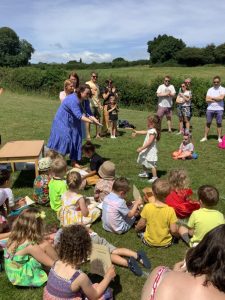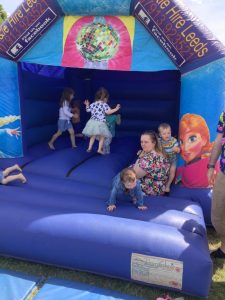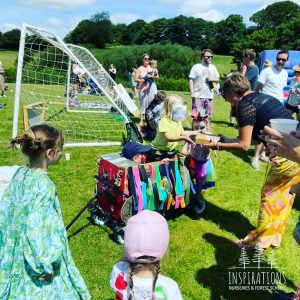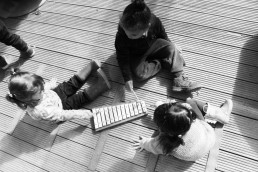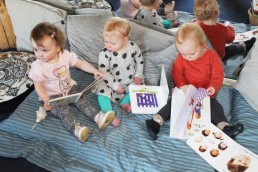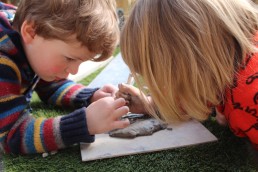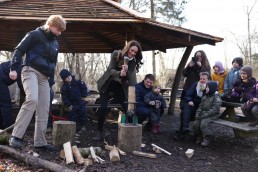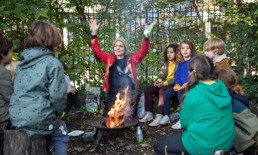Odin Our Nursery Dog
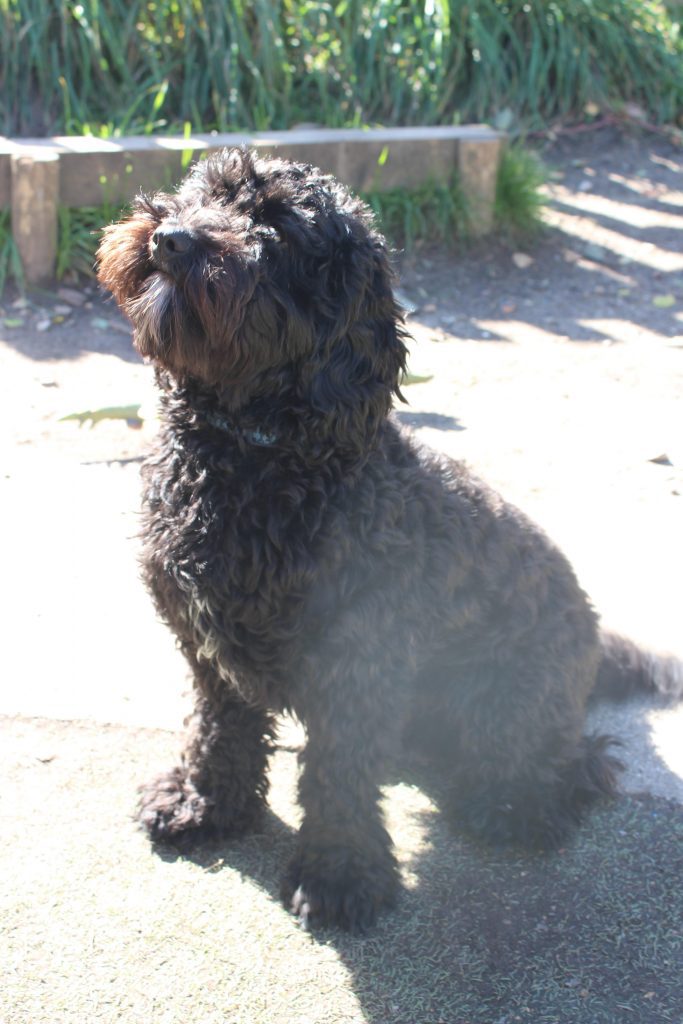
Have you met Odin at nursery? Odin is a cavapoo that comes to nursery on Mondays, Tuesdays and Thursdays, every week. A cavapoo is a cross between a Poodle and a King Charles Cavalier. They are both playful and affectionate breeds, which don’t tend to shed. He is hypoallergenic but no dog can be 100% hypoallergenic. However, he is bred from the most hypoallergenic breed, so may cause fewer symptoms in allergy sufferers. He is also very affectionate and loves a cuddle and a stroke!
Odin is my dog and I have been bringing him to nursery since I homed him at 10 weeks old. I researched and intentionally chose a cavapoo to be around children and the staff at nursery. He is a very sociable dog and loves the attention and interaction he gains from humans.
Pets bring comfort and companionship to some people. For some people having a cuddle or even a little stroke with a friendly dog can make them feel better if they are low or just need some comfort. In fact, research has been shown that just stroking a dog reduces stress levels and interacting with a dog increases levels of oxytocin (the feel-good hormone!). Some organisations who take part in mental health awareness, take visits from pets as therapy to support the people they are working with as part of their support network. It is becoming increasingly popular for childcare establishments, including schools and education, to bring a dog in to support the children and staff. They can support the schools to help children with their literacy skills and even encourage concentration in the classroom. For us, one of our aims was for children to become familiar with dogs, to learn how to behave around them and to gain the knowledge to care for them.
It is part of cultural capital that we close any gaps in the children’s learning. Not all families can have dogs, so therefore children can be unfamiliar with them. We also believe that children can benefit in other ways from regular interaction with animals. These ways include:
- emotional regulation
- increased understanding of responsibility
- development of empathy
Many children also get great enjoyment out of caring for and interacting with animals.
Our over 3’s use Hunger Hills woods for forest school sessions, twice a day. This is a very popular dog walking destination, so the children are greeted daily by dogs. Some dogs we know by name, and they are always happy to greet us. The children know what to expect and how to behave around them.
From being in our baby room, the children will meet Odin. He has specific times to explore the rooms and outdoor areas with very close adult supervision. The children are encouraged from a young age to be calm, not to put their hand in his face or to pull his fur and tail. They are shown how to stroke him and once he has had a little smell they then know to leave him to explore the environment. In toddlers, they will try to chase him, but the staff educate the children that this is not what we do. The toddlers are very keen to stroke him and will frequently ask for him to come into their area. This is the age group where he is most popular!
We previously had a child with special educational needs who struggled to interact with their peers and the adults. Once they met Odin a few times, you could see a change in their behaviour. They would interact with Odin and even through Odin. It was lovely to see.
Equally, the staff enjoy Odin’s company. If they are feeling low, they know they can come for a cuddle or a stroke if that works for them. He is in the office most times but would gladly give anyone a cuddle or some attention if they need it. Some parents even come and say hello to him! Please feel free to meet him on the days he is in or even come for a cuddle if you need one!
Kayleigh
Summer Carnival 2022
Saturday 9th July we all came together on the field behind Nursery to have a carnival style summer party and to celebrate our soon to depart school leavers. We had bouncy castles, a steel drum band, face paints. a parade and costume competition, BBQ and a school leavers ceremony. Thank you to Truly Scrumptious and 1Toy2Play in Horsforth for providing our prizes for most colourful, and most innovative costume. We all had a wonderful day in the sunshine and we hope you did too.
https://www.youtube.com/shorts/fCqJB1hT4Eg
Transitions Within Nursery
Once that blissful Maternity leave you have just shared with your little one draws nearer to an end and the dreaded time comes to go back to work, beginning the transition process in to a Nursery, childminder or Nanny starts and it can be a big and daunting step for you and your little one. All sorts of emotions will come with this as you will no doubt be worried, sad, nervous, and anxious about leaving your child for the first time. However please be assured the settling in process supports you and your child to overcome these negative emotions and instead, make you feel happy, excited and reassured about this next milestone.
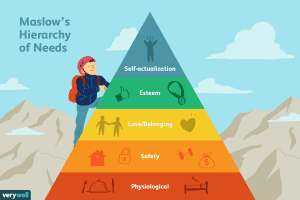 Young children starting a Nursery need support to enable them to adjust to a temporary separation from their family. Maslow’s Hierarchy of Needs demonstrates that children need to feel as safe, comfortable, and secure within the environment before they are able to move on to any other learning opportunities. Building a close bond with their Key Worker and the other Educators is particularly important so that they know they have someone to comfort them and make them smile when they are feeling a little sad. We aim to provide as much continuity and care as possible.
Young children starting a Nursery need support to enable them to adjust to a temporary separation from their family. Maslow’s Hierarchy of Needs demonstrates that children need to feel as safe, comfortable, and secure within the environment before they are able to move on to any other learning opportunities. Building a close bond with their Key Worker and the other Educators is particularly important so that they know they have someone to comfort them and make them smile when they are feeling a little sad. We aim to provide as much continuity and care as possible.
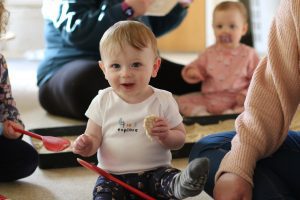 As children develop from birth throughout childhood this change involves a process for them to adapt their thoughts, feelings and behaviours to meet new expectations and even though this blog focuses on Transitions in to Nursery and between room bases, by the time they reach school age, they will more than likely of experienced more than just these transitions in their life. Depending on circumstances the child may be forced to attend more than one setting during the week and one of the big transitions they face is school. Next weeks blog will focus on transitions to school.
As children develop from birth throughout childhood this change involves a process for them to adapt their thoughts, feelings and behaviours to meet new expectations and even though this blog focuses on Transitions in to Nursery and between room bases, by the time they reach school age, they will more than likely of experienced more than just these transitions in their life. Depending on circumstances the child may be forced to attend more than one setting during the week and one of the big transitions they face is school. Next weeks blog will focus on transitions to school.
The Transition to Nursery is like a journey and takes time, preparation and planning. It is important to us that Parents and the Educators work together to make the process as smooth as possible.
The Procedure at Inspirations is as follows-
Under 2's
- A phone call is made to parents, by either the room leader or the Deputy room leader 4-6 weeks prior to the start date and a discussion is had to book in the home visit and settling in visits. It is also a chance to have a chat and ask any questions you may feel unsure about.
- Home visit 3-6 weeks prior to start date (applies to 2-year funded children also)
- Transition visits in to setting 1-2 weeks leading up to first day (1 x 1 hour with Parent, 1 x 1 hour on own and 2 x long visit (3-4 hours) over sleep and lunch or lunch and sleep depending on routine at time)
During these periods of settling in, we aim to share information and build up a picture of the child’s starting points, give a parent pack which will show pictures of the room they will start in along with pictures of the staff (identifying key worker and what their role is) and an overview of the daily routine. We give a parent handbook, check through paper work and talk about/document the routine they are currently following at home. We introduce their Key Worker and discuss any other information you feel relevant. It is also chance to speak about any allergies or dietary requirements
From 2-3 Years and Older
- A phone call is made to parents, by either the Room Leader or the Deputy 4-6 weeks prior to the start date and a discussion is had to book in the settling in visits. It is also a chance to have a chat and ask any questions you may feel unsure about.
- Transition visits in to setting 1-2 weeks leading up to first day (1 x 1 hour with Parent, 1 x 1 hour on own and 1 x long visit (3-4 hours) over lunch or tea
During these periods of settling in, we aim to share information and build up a picture of the child’s starting points, give a parent handbook, check through paper work and talk about, document the routine they are currently following at home. Introduce Key Worker and discuss any other information you feel relevant. It is also chance to speak about any allergies/dietary requirements
 The procedure for room transitions is the same however, the conversations and planning happens between the Room Leaders, and the Key Worker attends the first visit with them. The Key Worker completes a transition form and takes this through on the first visit, this indicates starting points for the child and any other information that needs to be passed on.
The procedure for room transitions is the same however, the conversations and planning happens between the Room Leaders, and the Key Worker attends the first visit with them. The Key Worker completes a transition form and takes this through on the first visit, this indicates starting points for the child and any other information that needs to be passed on.
The impact of our procedures has shown us that the time given for them to settle in before starting is more than sufficient and during this time they have began to familiarise themselves with the environment and the Educators, in particular their new Key worker. However, if there is a chance it hasn’t gone as planned, we can offer additional support by allowing more settling in visits.
All this ground work to ensure smooth transitions helps create the right environment for your children to become confident little leaners here at Inspirations.
“If children feel safe, they can take risks, ask questions, make mistakes, learn to trust, share their feelings, and grow.” ~ Alfie Kohn
-Ashleigh
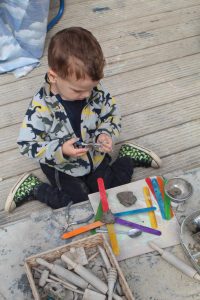
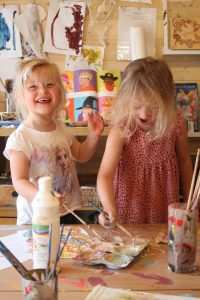
Teaching Maths through Nature
In my last blog ‘Lets Shake Up Education’ (25th March 2022) I highlighted my personal issues with today’s education system and explored the idea of schools being encouraged into an alternative method of teaching, potentially along the lines of Inspirations’ philosophy and pedagogy of child centred learning and adult/child collaboration and team work.
 In our current mainstream schooling system we have reduced teaching maths (along with a myriad of other subjects) to a behind the desk repetitive, memorising task with little to no practical, exciting exploration of content. It is hardly surprising then to note that a recent US study from The National Centre for Educational Statistics, suggested that approximately 70% of year 4 girls report an interest in maths, but by year 8, this figure had fallen to 53%, the largest decline during any period of time in a girl’s K-12 experience. For boys, 69% report an interest in maths in year 4, declining to 58% by year 8.
In our current mainstream schooling system we have reduced teaching maths (along with a myriad of other subjects) to a behind the desk repetitive, memorising task with little to no practical, exciting exploration of content. It is hardly surprising then to note that a recent US study from The National Centre for Educational Statistics, suggested that approximately 70% of year 4 girls report an interest in maths, but by year 8, this figure had fallen to 53%, the largest decline during any period of time in a girl’s K-12 experience. For boys, 69% report an interest in maths in year 4, declining to 58% by year 8.
Part of our philosophy here at Inspirations, is learning through nature, and when you really look closely, you can see so clearly maths throughout natural structures, it is in fact at the heart of all things natural! As The Centre for Learning Through Nature so aptly describes it-
‘It is ironic that teaching maths this way (though nature) should be considered innovative: Nature has long been the inspiration for the development of mathematical ideas. Mathematicians throughout history have marvelled at the fact that maths seems to “fit Nature like a glove.” “How can it be that mathematics,” Einstein famously wondered, “being after all a product of human thought independent of experience, is so admirably adapted to the objects of reality?” Galileo simply put it this way: “Mathematics is the language with which God has written the universe.”
 Indeed, mathematicians have discovered mathematical rules in the nature of light and gravity, in the shape and movement of planets, in rivers and trees, and in the beating of people’s hearts. It might fairly strike some as strange, then, that maths education so rarely has any Nature in it.’
Indeed, mathematicians have discovered mathematical rules in the nature of light and gravity, in the shape and movement of planets, in rivers and trees, and in the beating of people’s hearts. It might fairly strike some as strange, then, that maths education so rarely has any Nature in it.’
I ponder why this is so, it saddens me that it is. I know for certain I would have been so much more involved in a maths curriculum if it had, and my children too.
If you are interested in supporting your child’s mathematical development through practical, outdoor lead, nature enriched activities then think about going on an expedition to find:
1) The Fibonacci Sequence: a sequence of numbers beginning with 1 and 1, with each subsequent number being found by adding the two previous numbers together. Therefore, after 1 and 1, the next number is 2 (1+1). The next number is 3 (1+2) and then 5 (2+3) and so on.


2) Fractals: meaning the same basic shape is seen again and again in the shape itself, if you were to zoom way in or zoom way out, the same shape is seen throughout. Take a look at a fern leaf for example.
3)Shapes: hexagons in honeycombs or try blowing bubbles and see what shape you make.
4)Concentric circles: look at the circles in a tree stump or draw some in the mud.
Our whole galaxy is a mixture of these incredible mathematical principles, why then is our maths curriculum not giving our children the opportunities they deserve. Opportunities to explore these truly exciting principles?
I for one don’t understand, and the system in my view must change. A change in the right direction could give our children back autonomy over their own learning, to find the excitement of learning and exploring within and of nature. Who knows, maybe, like Galileo and Einstein, they too might discover some new principle of the universal language of maths, an opportunity not likely to happen sat behind a desk following a prescribed performance related curriculum…
What do you think?
-Nicola


Music Is Inside Us
The importance of Music in Early Years
Albert Einstein once said-
‘If I were not a physicist, I would probably be a musician. I often think in music. I live my day dreams in music. I see my life in terms of music.'
The beauty of music is it doesn’t speak in words, it speaks in emotion. It is a joy shared equally by babies through to the elderly. At Inspirations, music and creativity is the language we learn through, and there isn’t an hour that goes by without the influence of music somewhere.
A study at the University of California Brain and Creativity Institute discovered that children and babies who are exposed to musical experiences have increased brain development and reading skills. They also found that learning to play an instrument can improve mathematical learning and numeracy. But of course the benefits of music covers far more than just academic achievements.
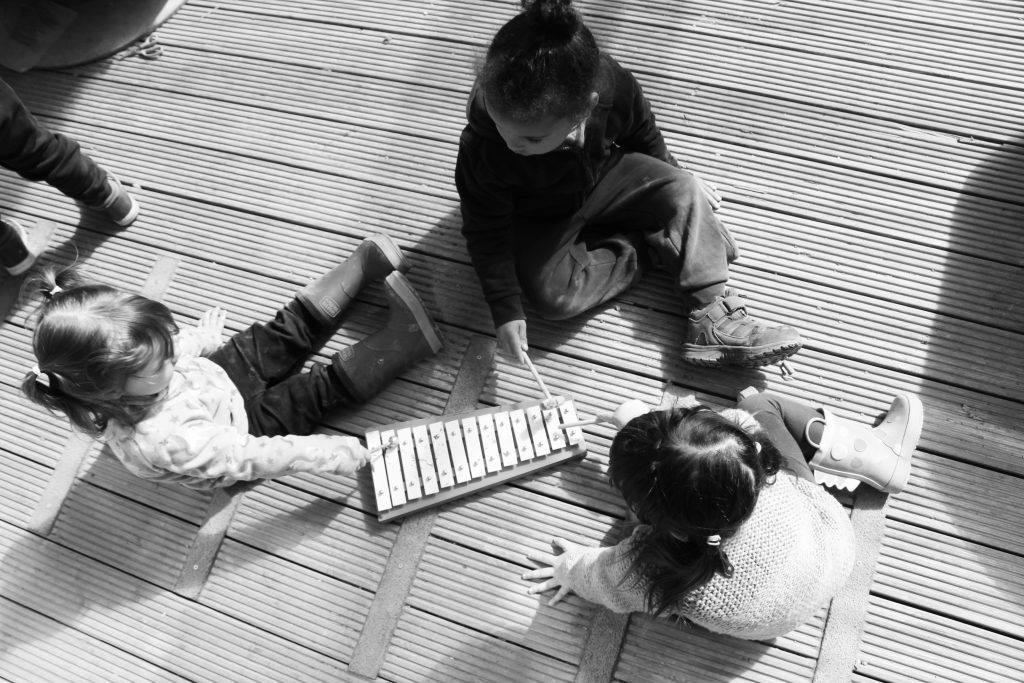
The many advantages of Music
Music brings joy. In our baby rooms the children learn their first sounds through song and rhyme. They build motor skills from movement and dance to music, as well as finding new ways to express themselves, and this only continues as they get older. As they move up from baby to toddler, and with the support from our Educators and Signing Sam they absorb new words and strengthen their memory skills. Through singing, dancing, music and instruments our little ones develop hand eye coordination, spatial awareness and balance.
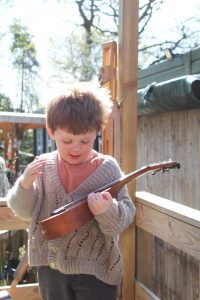
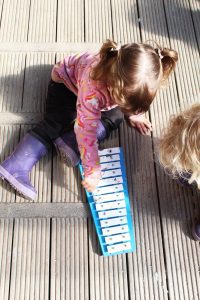
By the time our children reach pre-school they have had the chance to build up a repertoire or tunes and songs they’re now ready for some more advanced musical experiences. In the Art Studio we have daily ukulele sessions where the children learn to hold and strum, along with many other instruments. We make up and perform songs together or simply move to the sound of music and instruments. Naturally these experiences enhance our children's social skills and turn taking abilities but it also gives them a tool that is so important to take into their adult life- the ability better regulate emotions and control feelings.
Our carpet and choosing times are always accompanied by singing, one of our favourites in the Pre-school room is the Nigerian Greeting song 'Funga Alafia' with rhythmical clapping along side. Through song we can learn about diversity, cultures and widen our knowledge of language, the world, and our place within it. It also brings us all together in a shared moment of song.
https://www.youtube.com/watch?v=PDjgSoMTKpU
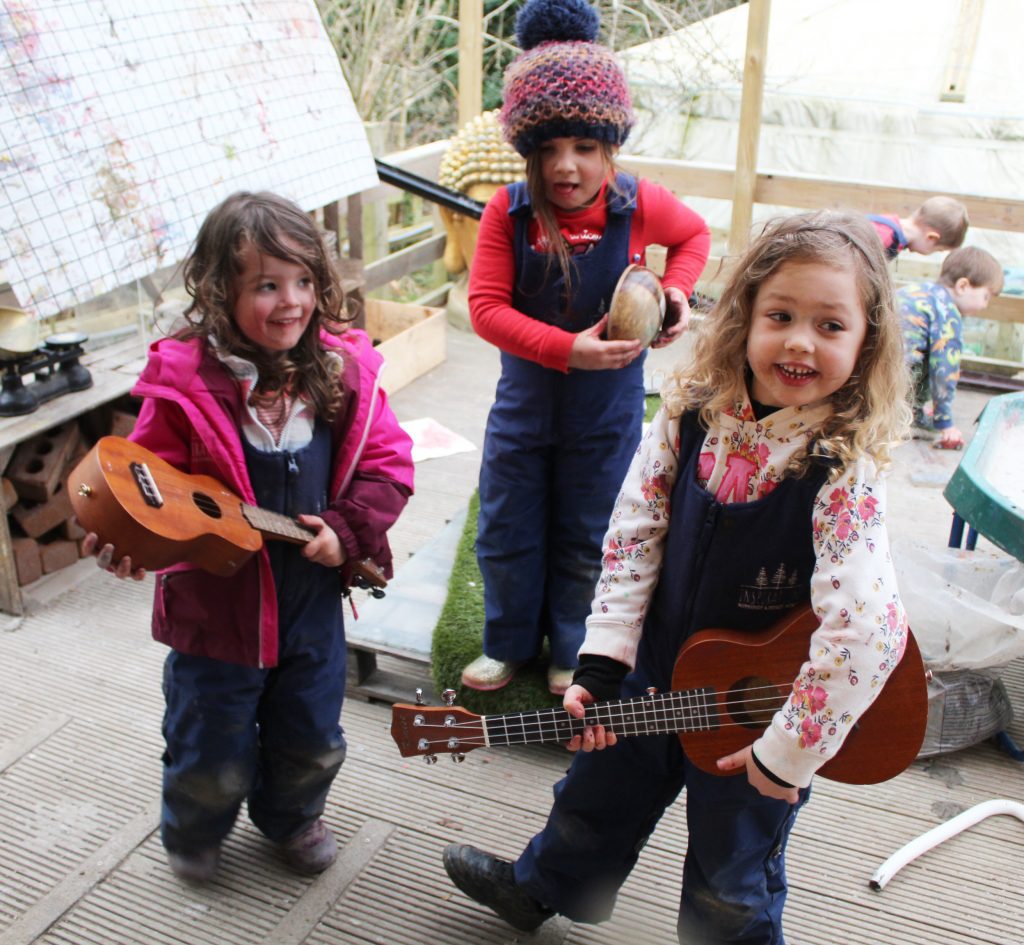
Music really is the key to bring us all together, but how can you bring more musical experiences into your daily home life?
- Take rhythmic instruments on outings to distract or focus them when needed
- Play orchestral music from YouTube
- Singing and dancing together- songs such as ‘Sleeping bunnies’
- Enrol onto a local music class
- Build your own shaker from yogurt pots and lentils
- Create drums from pots and pans
- Learn a dance routine
Gigs for our kids
Also keep an eye on Youth Anthems, who put on family friendly day time gigs and vegan food at Wharf Chambers, Leeds. Tickets to their next event 3rd July are on sale (free for under 18’s with a paying adult) and suitable for babies right up to adults. https://www.facebook.com/YouthAnthems/
Bring more music into your life, because after all, lifting our spirits is just one of the endless advantages it brings.
-Nathalie

The Joy of Reading
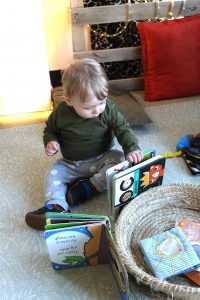 The term ‘Reading’ falls under the literacy aspect along with Writing, in the 'Birth to 5 Matters'- the guidance we follow to support the children in their development. As educators and parents we can spark that joy of reading from inside the womb. From noticing and engaging with sounds and images in the environment, handling books, re-telling favourite stories, songs and jingles, to enjoying an increasing range of print (fiction and nonfiction), and being able to recall and discuss stories or information that has been read to them or they have read themselves.
The term ‘Reading’ falls under the literacy aspect along with Writing, in the 'Birth to 5 Matters'- the guidance we follow to support the children in their development. As educators and parents we can spark that joy of reading from inside the womb. From noticing and engaging with sounds and images in the environment, handling books, re-telling favourite stories, songs and jingles, to enjoying an increasing range of print (fiction and nonfiction), and being able to recall and discuss stories or information that has been read to them or they have read themselves.
Literacy in the early years is very important as it is fundamental in early education and is a skill that is vital for everyone. It can include talking about books, print in the environment, early mark making, as well as sharing books and reading. The opportunity to read crops up multiple times a day, whether it be reading books, road signs, shop/supermarket signs/logos, or even familiar words such as name tags.
Why is it so Important for our little ones?

Vital connections in the brain are made very early in life and when stimulated this forms the basis of all future learning and intellectual ability. In simpler terms, reading to your child at a young age stimulates these brain cells and each time it strengthens them and they form connections with even more brain cells. Stimulating your young child’s brain cells through these early experiences will help them to become better listeners, readers, and communicators as well as instilling a lifelong love of learning.
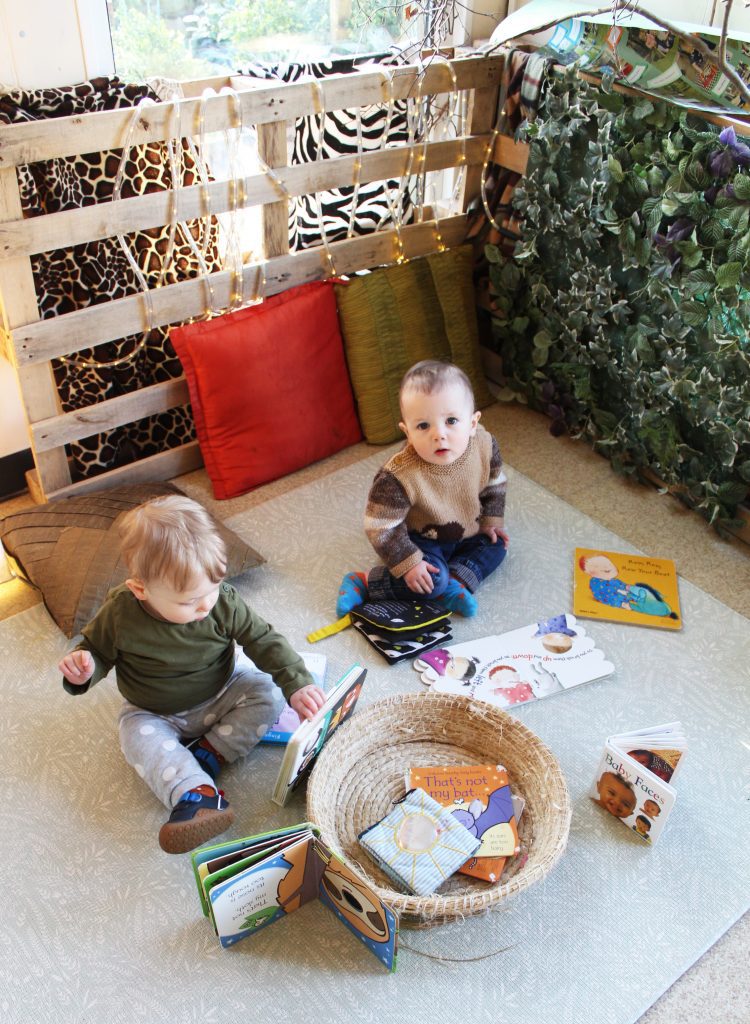
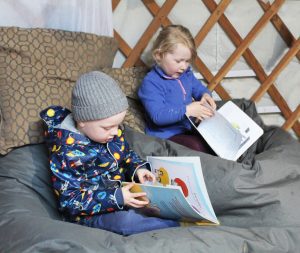

When you think about why reading is important, you may think of the obvious benefits such as expanding your vocabulary and knowledge but what many people don’t realise is that for young children, it develops so many other skills too. Early reading ignites creativity, sparks curiosity and stimulates the imagination in young children. Often this leads to role play as children grow which helps to develop other skills such as empathy and problem solving. While these are significant benefits to young children, the biggest psychological benefit is how reading helps to grow self-confidence and independence from such an early age. The simple act of taking time out of your day to read to your baby or sit down with your child helps to promote greater maturity and discipline, which are all essential attributes when it comes to your child learning to read in a school setting as sometimes the psychological pressure can be too much. If you read with your children early on and help them to learn at their own pace in a fun setting, you can foster a love of reading and help them to become competent and confident at it before having to do it in front of others
How do we support the joy of reading?
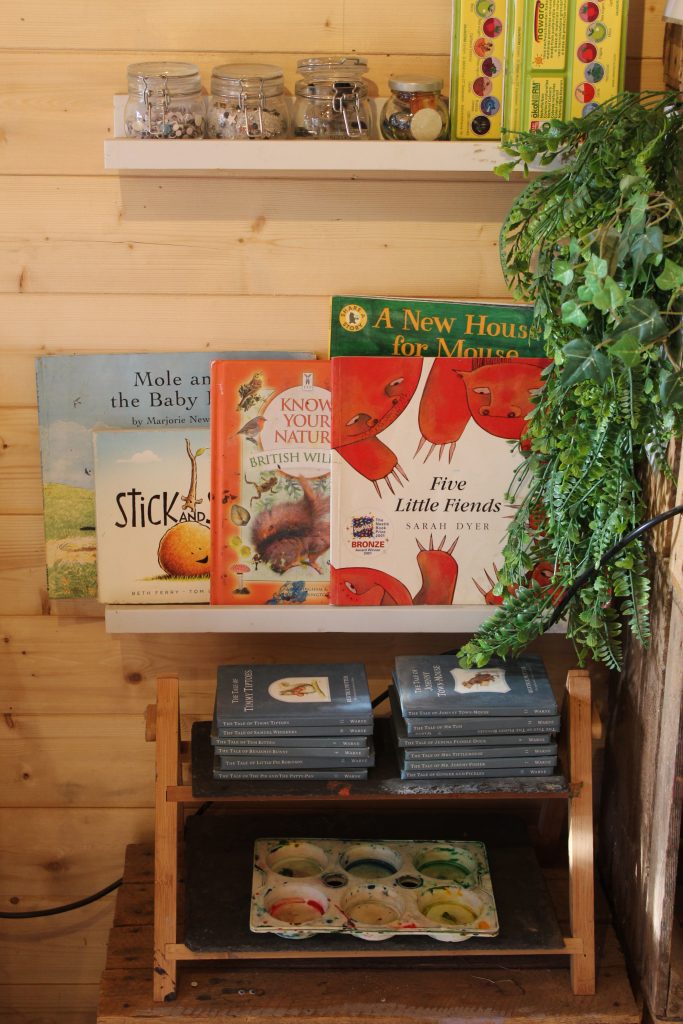 Here at Inspirations, we make available many challenges and resources to support the joy of reading. Whether it be the lending library we have made in our front entrance, easy to reach book display shelves for independent access at all times, changing the books depending on the children’s interests, projects, or diversity and providing information books on such things as animals/mini beasts, space, and school.
Here at Inspirations, we make available many challenges and resources to support the joy of reading. Whether it be the lending library we have made in our front entrance, easy to reach book display shelves for independent access at all times, changing the books depending on the children’s interests, projects, or diversity and providing information books on such things as animals/mini beasts, space, and school.
We support each activity area/area of provision with books as an extra provocation or to act as inspiration. We create cosy areas for the children to access freely when they wish to have some down time and look at books with their friends or independently as well as creating carpet time sessions for the children to have a controlled story time with an adult. We celebrate World book day and visit the local library, and have, on a couple of occasions invited the librarians in to do a session with the children. Creating a literacy area in our preschool provision for the children to freely access, as well as having names for the children’s pegs and self registration, helps the children with letter and name recognition, which then leads them on to phonetically sounding out the initial sounds/words. Sharing familiar stories or stories with Rhymes so that the children can join in with rhymes and repeated refrains is something the children love to do.
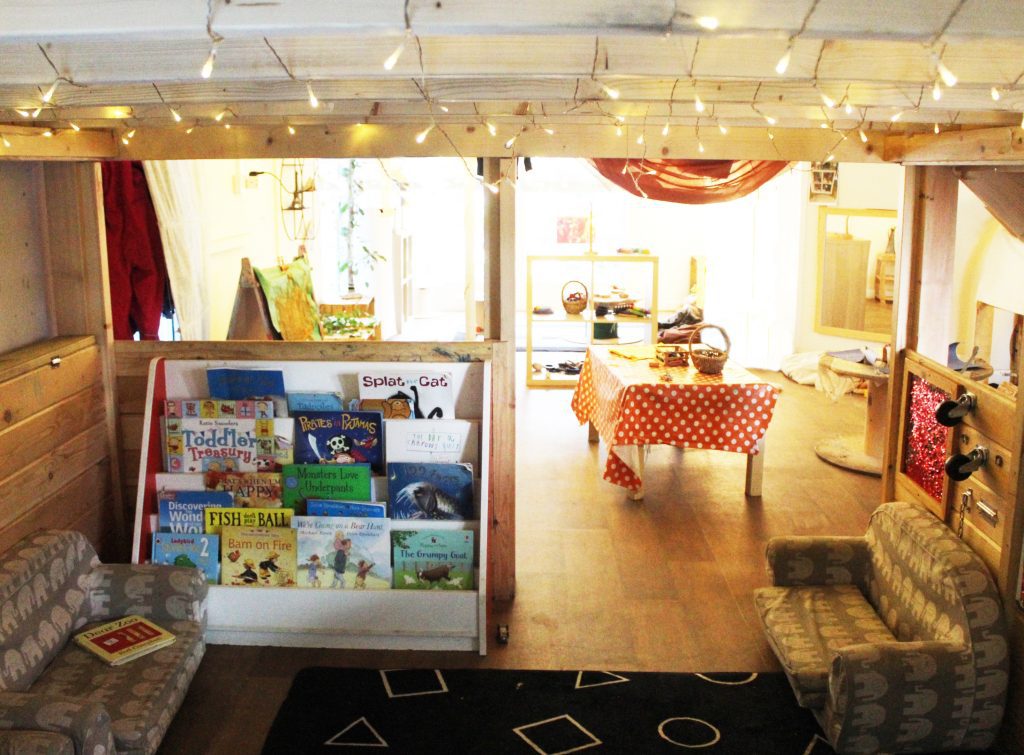
Now you know why reading is important and all the benefits that it offers, start to make the time to read a little with your children every day. Soon you’ll find that cuddling up in bed reading stories is your favourite part of the day and it’s doing your children a world of good too, because after all...
“There are perhaps no days of our childhood we lived so fully as those we believe we left without having lived them, those we spent with a favourite book.”
― Marcel Proust, Days of Reading
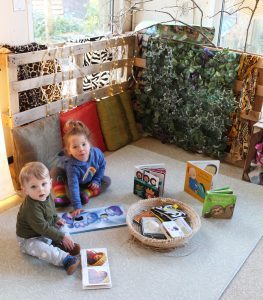
Let’s shake up Education
At Inspirations nurseries we go the extra mile to ensure we are providing the children in our care a ‘second to none’ learning environment. Our ethos and pedagogy speak of children learning trough their interests, through nature and art, both independently and with their peers. Our environment is set up to encourage thought processing skills, logical problem solving and collaborating ideas to solve problems within small groups of friends and/or the adults supporting them.
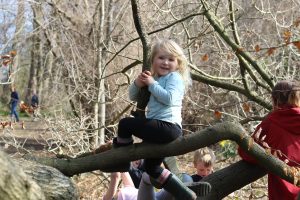
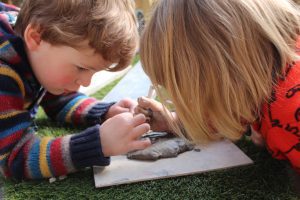
Our love of all thing’s nature encourages us to consider the planet and our impact on its future evolution. We recycle, upcycle and reuse and repurpose our waste as much as possible and discuss with the children our environmental impact wherever appropriate.
The time, care and commitment required to offer our children this rich varied learning environment is considerable, the rewards however, are clear to see in the faces of every one of our children. Their open, happy, faces, the intent with which they explore each developmental opportunity is the reason we, in this profession, do what we do, it’s pure joy.
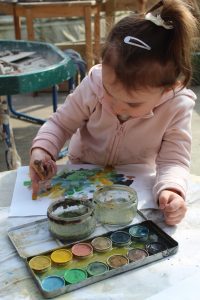
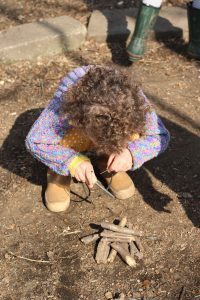
There is no doubt in my mind that the freedom of choice, the sense of open space and freedom, the ability to be autonomous in their learning experiences, to make their own choices and explore their own ideas is one hundred percent the reason that our children stand out in reception classes across our postcode as having the necessary ‘school ready skills’ (a term I abhor)!
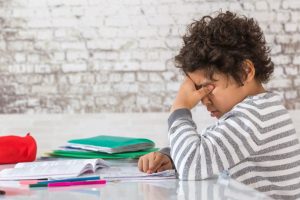
It therefore leaves me feeling deflated, saddened and to be honest a little angry on behalf our children that these foundational skills which should be built on and nurtured throughout their childhood, is ripped away by a school education system that is failing to ignite curiosity, lifelong learning skills and most of all, an enthusiasm to learn. Having had a child recently start school after attending Inspirations I can’t tell you how against the grain I have found the homework load, the testing at age five and above all, the change in my child’s engagement in her own learning. Her interest has waned, she is no longer skipping out to tell me what she has been doing… Why, because it has been inconsequential to her, it is something that has just happened, rather than something she has engaged with and in. She is no longer at the centre of her learning process. Testing teachers teaching skills has overridden the requirement (and every child’s right) to put them at the heart of their own learning and development.
Consider an alternative
It is my view that our current learning institution is failing in terms of both the children attending and the teachers teaching. Here at Inspirations, we have witnessed first-hand the uptake of teachers leaving the profession in recent years citing burnout and their personal loss of passion for a role that is no longer rewarding to them. I have always said that working alongside children is a vocation not a job, we need to foster the passion and autonomy of the people educating our children NOT beat them down and stamp them out. This is unfortunately the situation we are currently facing within schools across the UK.
The alternative then… Let’s consider a school environment that follows a similar ethos and pedagogy to Inspirations where children and adults collaborate together in environments that encourage lifelong learning experiences, where children feel free to learn though play where they can experiment, make mistakes and learn from them without feeling like they have failed or haven’t met pre prescribed arbitrary standards. ‘Standards’ which only serve to demoralise both the teachers and students.
Our school environments haven’t changed since their conception over a hundred years ago. I for one think it’s time for a new approach.
Do you agree?
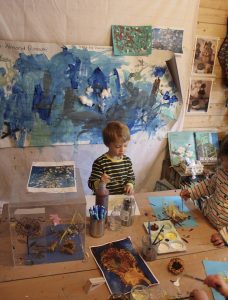
-Nicola
Duchess of Cambridge splits logs with forest school pupils
Forest School in The News
'The Duchess of Cambridge has spent the morning learning the tricks of the lumberjack trade — from a class of five-year-olds.
The duchess, 40, has been on a fact-finding mission in Denmark to learn how the country has become a world leader in its approach to early childhood development.
She used a mallet to chop wood and joined a mindfulness session with young children as she began her second day in Copenhagen at a forest kindergarten.'
Read the full article here:
https://www.thetimes.co.uk/article/4e1b8532-94a7-11ec-9aec-82f0032d4cd3?shareToken=bd3efd93a6f7f3d818a2a49b7990cd3f
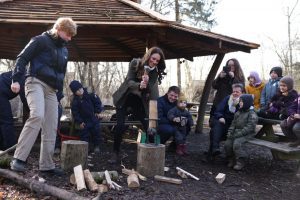
2021 in the Art Studio
Looking back over another year in the Art Studio reminds me how every year of learning is completely different to the previous one, and that's the beauty of a child led setting.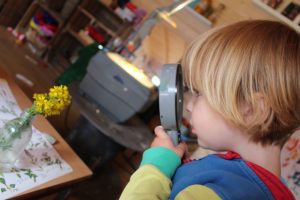
The Art Studio is Reggio Emilia inspired space for the 3 and 4 year olds. They come in smaller groups to extend any areas of learning interests through all kinds of expressive arts. It is a purpose built wooden structure set behind the yurt where the children's voice forms the basis for each following weeks planning and activities. Because of this there is no way of knowing what subjects will be explored and what questions shall be raised by the children. But one thing i do know is; the combination of their imagination and curiosity, and the art studio's extensive creative supplies of art, music and visuals makes for a thousand possibilities.
Here's just some of what we got up to this year-
The year started with an interest in creating structures. I noticed the children using clay, magnets and loose parts to build spaces. This lead onto an interest in castles and 3D shapes which lead the children to compare materials.

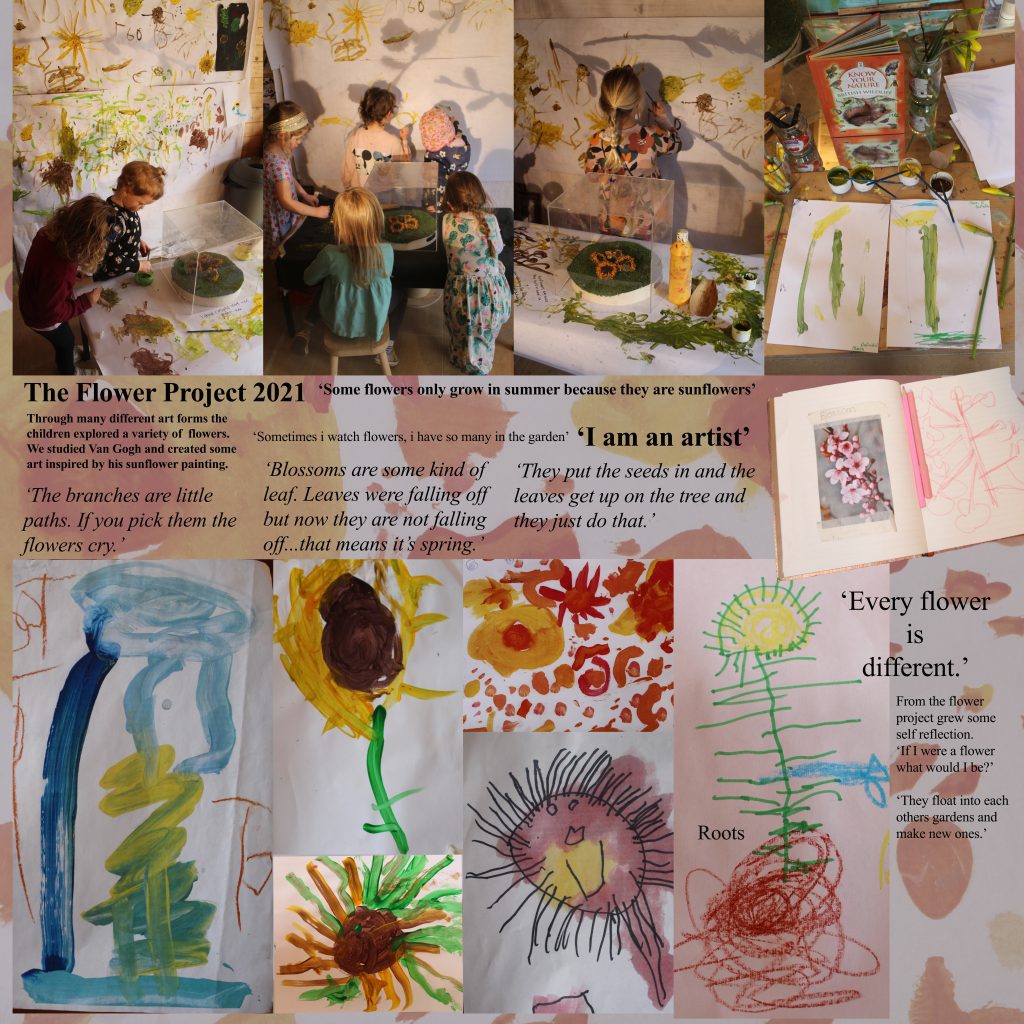
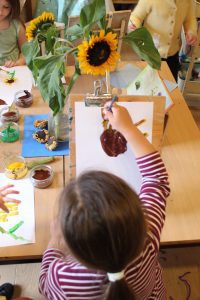
As early spring set in the children noticed changes to our trees and the first sign of growth. This was to lead onto a 7 month project exploring plants, flowers and trees, but also lead us to look at different artists and styles of painting. Van Gogh's sunflowers inspired us to try new ways of painting, as we studied Blossom, Sunflowers and Dandelions.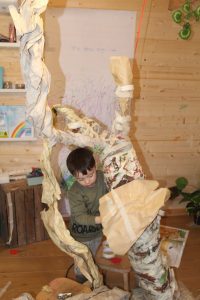
'The branches are little paths'
The growth interest lasted the entire Spring and Summer, we dissected plants and vegetables as the children experimented with their own ideas of the hypothesis of the journey from seed to plant. In the Autumn as the trees started changing they became a topic of interest which lead to a tree structure being built from floor to ceiling.
Throughout all of these group interests, individual interests are happening simultaneously and woven throughout each art session. Here's just a snippet of this years creativity-
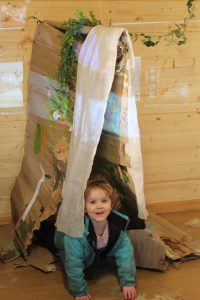

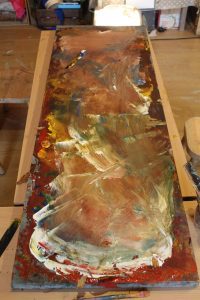

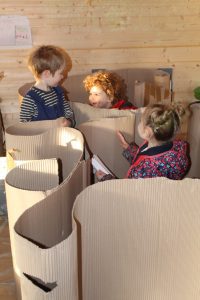



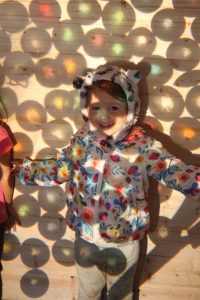
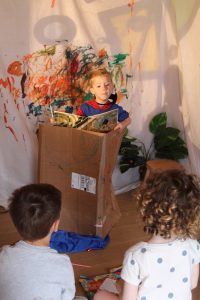
Don't forget to check out our Art Studio video on Youtube-
-Nathalie
https://youtu.be/4-59qb9GgdQ
Forest School in the News
It's becoming more common to find Forest School articles making the news and for all the right reasons. Out of the turmoil of lock down came some good news stories, and here is one that we wanted to share with you.
Lockdowns were “a chance to get off the treadmill” for families, says Lewis Ames, co-director of Devon-based forest school Children of the Forest. They’ve seen a rise in applications since the start of the pandemic, with about 150 families on their toddler-group waiting list, and 50-60 children on the waiting list for their forest school for home-educated children.
